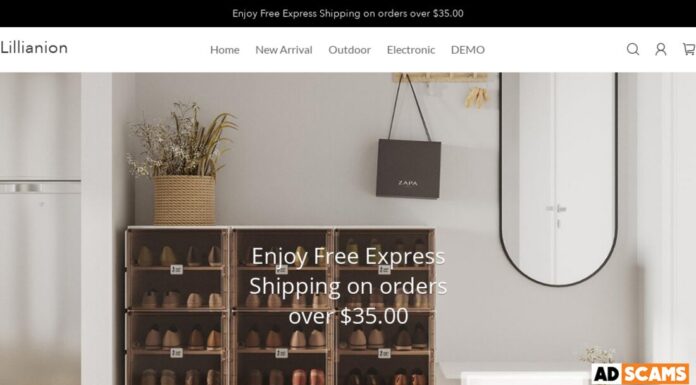Do you wish to take over the billion-dollar industry of health and fitness? The global COVID-19 pandemic has made people more aware about their health and active. Most people today focused more on their physical health to remain productive and live their lives to the maximum. This is why fitness apps have entirely changed the fitness industry with advanced features.
Custom fitness applications allow healthcare providers to create fitness apps, mHealth, and telemedicine. In turn, patients can now track their health status and fitness levels and get treatments via virtual consultation. In this blog, you will discover how to create a fitness app, the features to be included, benefits, and cost estimation.
Why There Is A Need To Create Fitness Apps?
Fitness apps provide a convenient and affordable solution for people looking to improve their health and wellness, and the demand for such apps is expected to continue growing.
There is a growing need to create fitness apps because of the following reasons:
- Increased health and wellness awareness: People are becoming more conscious of their health and wellness and looking for ways to stay active and fit.
- Convenience: With busy schedules and limited time, people seek convenient and accessible fitness solutions that fit into their daily routines.
- Personalization: People are looking for customized and personalized fitness solutions catering to their needs and goals.
- Social motivation: Many people find it easier to stay motivated when they can track their progress and connect with friends, family, or other users.
- Health and wellness trends: The rise of health and wellness trends, such as mindfulness and yoga, has increased demand for apps that cater to these interests.
Types of Health and Fitness Apps
Since the market for mobile app development services is accelerating rapidly, you can reach out to a best team of designers and developers to develop your fitness app.The specific health and fitness app type depend on the user’s needs, goals, and preferences. There are several types of health and fitness apps, including:
- Workout apps provide users with customizable workout plans, exercise routines, and progress-tracking features.
- Nutrition apps help users track their food intake and provide personalized meal plans and nutrition advice.
- Mindfulness and meditation apps: These apps offer guided meditations, breathing exercises, and mindfulness practices to help users manage stress and improve mental well-being.
- Sleep-tracking apps: These apps track users’ sleep patterns and provide advice on improving sleep quality.
- Women’s health apps provide information and resources specific to women’s health, including menstrual cycle tracking and pregnancy planning.
- Health tracking apps: These apps allow users to track and monitor a range of health-related data, such as weight, heart rate, blood pressure, and more.
- Yoga apps: These apps offer a range of yoga and Pilates classes, with guided instructions and demonstration videos.
Technologies Used To Build Fitness Apps
These technologies are transforming the healthcare industry and enabling the development of innovative and impactful healthcare apps to improve patient outcomes, increase access to care, and reduce healthcare costs.
The following are some of the trending technologies used to develop healthcare apps:
- Artificial Intelligence (AI) and Machine Learning (ML): AI and ML are increasingly used in healthcare apps to provide personalized recommendations, predict health outcomes, and automate routine tasks. For example, AI-powered chatbots can provide health advice and triage symptoms. In contrast, ML algorithms can predict disease progression and help healthcare providers make more accurate diagnoses.
- Blockchain: Blockchain technology is used to securely store and manage sensitive health data, such as medical records and test results. By using blockchain, healthcare providers can ensure that patient data is secure, transparent, and easily accessible.
- Wearables and IoT devices: Wearables and IoT devices, such as smartwatches, fitness trackers, and smart scales, are becoming more prevalent in healthcare. These devices can collect and transmit data, such as heart rate, sleep patterns, and activity levels, to healthcare apps, which can then monitor and track health indicators and provide insights and recommendations.
- Cloud computing: Cloud computing is used to store, manage, and analyze large amounts of health data. With cloud computing, healthcare providers can securely access patient data from anywhere and easily scale their technology as their needs change.
Fitness App Development – Step-By-Step Process
The step-by-step fitness app development process provides a general outline of the development process for a fitness app.
- Define the concept and goals: The first step in developing a fitness app is to define the concept and goals of the app. It comprised of identifying the targeted audience, key features and functionality of the app, and the user experience.
- Conduct market research: It’s crucial to perform market research first and identify potential opportunities and challenges it come across. This can include researching existing fitness apps, identifying the most popular features and functionalities, and understanding user preferences and behaviors.
- Create a detailed project plan: Once you are clear with the app idea, it’s time to create a detailed and specific project plan. This will include a project timeline, a budget, and a list of the key deliverables and milestones for the project.
- Choose the right development team: The next step is to choose the right development team for the project. This may include in-house developers, a dedicated development agency, or a combination. Choosing a team with experience in developing fitness apps and a track record of delivering high-quality, user-friendly products is essential.
- Design the user interface: The fitness app’s user interface (UI) is one of the most critical elements of the app, as it affects the overall user experience. A good UI should be visually appealing, easy to use, and intuitive. The development team should work with a designer to create a UI that meets the needs and preferences of the target audience.
- Develop the back-end system: The back-end system of the fitness app is responsible for storing and managing data, such as user profiles, workout logs, and health metrics. The development team should work with a back-end developer to create a secure, scalable, and reliable back-end system that can handle large amounts of data and support the app’s needs.
- Test the app: Before launching the fitness app, it’s important to thoroughly test it to ensure that it meets the needs and requirements of the target audience and functions as expected. This may include user testing, performance testing, and compatibility testing.
- Launch the app: Once the fitness app has been thoroughly tested and all bugs have been fixed, it’s time to launch it. The launch process may include submitting the app to app stores, creating a marketing plan, and promoting the app to the target audience.
- Monitor and improve the app: After launching the fitness app, it’s vital to monitor its performance and continuously improve it based on user feedback and performance metrics.
Related Article: Innovative Mobile App Ideas for Startups
Must-have Features In Fitness App
An app with many features makes your mobile app stand out from the rest. You choose the features you wish to include in your mobile applications. In this section, we’ll detail the features we believe are essential for fitness apps of all categories required to guarantee impressive user acquisition, engagement, and retention rates.
1. User Profile
The user’s profile contains personal details like age, weight, and height, as well as gender and medical issues. This allows users to assess their performance accurately.
2. Physical Conditions Tracking
Let users monitor their activity, such as the number of steps taken, sleep duration, arterial tension monitoring, and many more. It is possible to implement tracking capabilities even without the need to connect external devices such as wearables.
3. Diet Features
It can add an amount of weight to your service when compared with other applications. It is possible to offer the simplest version of diet tracking free and charge clients for more customized plans.
4. Music App Integration
The app can be integrated with popular music apps. It can play workout-specific playlists that can make your workout more enjoyable. This can make exercising more enjoyable without having to fiddle with other music sources.
5. Wearable Device Integration
Integrating wearable devices is always useful for whatever type of app you’re developing. Wearables and fitness apps that integrate with them can increase the worth of the application. It also makes it easier for users to utilize the app more often.
6. Workouts by Professionally Trained Coaches
It is possible to offer highly skilled and well-known coaches training sessions within your application. Apple Fitness+ is an example of this Apple watch-focused fitness program for home use that helps users complete exercises with well-known coaches.
7. Push notifications
Push notifications are an essential component of an app’s toolbox. This feature does not just increase engagement but also the amount of time users spend using the application. For fitness and health apps, push notifications are utilized to remind users to start a workout, the time for medication, the date of the next meal, and many other important occasions.
8. Social sharing
Integrating social media sharing into your apps for tracking healthcare lets users post, chat, and engage with others within the application. Popular fitness apps on mobile, like Nike Run Club and Strava, have added this feature to boost user engagement.
How Much Does it Cost to Make a Fitness App?
Some of the main factors that influence the cost of a fitness app are app complexity, platform, fitness app development team, and more.
Based on these factors, developing a fitness app can range anywhere from a few thousand dollars for a simple app to hundreds of thousands of dollars for a complex, feature-rich app.
Key Players in Fitness App Industry
Here are some real-life examples of fitness apps available in the market. These apps rank as one of the top contenders in the fitness market and have a significant number of users. Many of these health-tracking apps work well using free versions, whereas others require some money to access premium features for healthcare apps.
- Headspace
- Freeletics
- Sworkit
- Glo
- Fooducate
- MyFitnessPal
Bottom Line
In the coming years, the health and fitness industry will benefit from technological advancements as more companies will focus on fitness apps and cater to a wider audience remotely.
To ensure that you are creating a successful fitness and health app, be sure that you connect with a respected fitness app development company that can create a reliable fitness application that can be integrated with your existing business processes effortlessly.

















